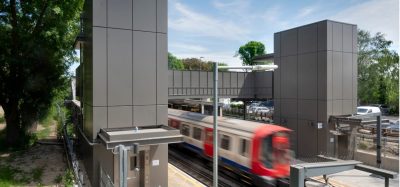Establishing a new safety culture for European railways
Posted: 28 November 2019 | Enno Wiebe, Libor Lochman | 1 comment
Libor Lochman (Executive Director) and Enno Wiebe (Technical Director) of the Community of European Railway and Infrastructure Companies (CER) write that further concentration and common understanding is required to agree on a single and comprehensive model for a rail safety culture in Europe, but explain that to achieve this will be difficult, yet necessary, to contribute to a Single European Railway Area.


At the end of the 1980s, political pressure emerged to revive rail and create a harmonised and connected European railway system that would fully allow free movement of passenger and freight trains across national borders. The very first ‘Railway Directive’ (91/440/EC) from 1991 opened access to railway networks to companies other than those that own the railway infrastructure. Then, from 2001, four successive railway packages were gradually put in place, opening the market for all types of rail services and imposing European interoperability and safety in order to push integration further.
At the end of the 1980s, political pressure emerged to revive rail and create a harmonised and connected European railway system that would fully allow free movement of passenger and freight trains across national borders. The very first ‘Railway Directive’ (91/440/EC) from 1991 opened access to railway networks to companies other than those that own the railway infrastructure. Then, from 2001, four successive railway packages were gradually put in place, opening the market for all types of rail services and imposing European interoperability and safety in order to push integration further.
The Single European Railway Area
Over the last two decades, huge efforts were made to come closer to the target: the creation of a Single European Railway Area (SERA). As a result, we have recently seen the removal of technical, administrative and regulatory barriers, full market opening, effective enforcement of EU legislation, a more effective separation between infrastructure management and rail service provision, as well as the setting up of a strong EU Agency for Railways as a ‘system authority’.
The Fourth Railway Package’s technical pillar brought substantial reforms, such as a new harmonised approach to safety certification and vehicle authorisation, harmonised implementation of ERTMS, and a reduction in the number of national rules. In the domain of railway safety, the European Union Agency for Railways (ERA) now issues the single safety certificate, whilst the supervision role is maintained by the national safety authorities. Moreover, the new railway safety directive succeeded in clarifying the role and responsibilities of the railway actors. The completion of SERA is therefore on track. As a last step, full technical interoperability is needed and a new approach to safety – a new ‘safety culture’ – is inevitable.
Safety culture
A safety culture is the collection of values adopted by companies and their employees in relation to risks – it is a part of organisational culture. Safety culture refers to the interaction between the requirements of the Safety Management System (SMS), how people make sense of them based on their company policy, their attitudes, values and beliefs, and what they actually do, as seen in decisions and behaviours. A sound safety culture includes a commitment to safety, realistic practices for handling hazards, continuous organisational learning, and care and concern for risks shared across the workforce. In Europe, Member States and the involved actors have developed different safety cultures, either with a rule-based or a risk-based approach. In order to contribute to SERA, the European institutions – comprising of, in particular, the European Commission (EC) and ERA, the National Safety Authorities (NSAs), together with the huge variety of sector actors – now have the task of shaping a common safety culture whilst sustaining railways as the safest mode of land transport. In a multi-modal comparison, rail indeed appears as the safest mode of land transport in the EU, with the fatality risk for a train passenger being one third lower than for a bus/coach passenger.
ERA’s railway safety culture model and the European Railway Safety Culture Declaration
In order to support the design and implementation of strategies to improve safety culture, ERA has developed the European railway safety culture model. This framework allows the actors to assess safety culture and identify areas for improvement. The model is made up of three components: cultural enablers, behaviour patterns and railway safety fundamentals.
In line with this European railway safety culture model, ERA, supported by the EC and the European railway sector, drafted the European Railway Safety Culture Declaration. The Declaration lays down the four railway safety fundamentals:
- Managing major railway risks with anticipation and resilience
- Understanding workplace reality
- Cultivating a continuous learning environment
- Integrating safety into business at all levels.
Many actors have already committed to this safety declaration by signing it, and future revisions will most probably further pave the way to a joint European railway safety culture model.
To ensure that safety performance does not decrease in any of the Member States, Common Safety Targets (CSTs) are defined. Assessing the achievement of CSTs is facilitated by the collection and use of Common Safety Indicators (CSIs). This common set of rail safety data consists of information gathered from railway undertakings and infrastructure managers based on common definitions and calculation methods, and includes significant accidents, fatalities and serious injuries, suicides, as well as incidents (e.g. signals passed at danger, broken rails, broken wheels, level crossings), among others.Accomplishing common safety targets in Europe.
In its 2019 report, ‘Assessment of Achievement of Safety Targets’, ERA concluded that as a result of the application of the CST methodology “railway safety in the EU remains acceptable” (below the relevant EU reference value) for all categories of users. ERA nevertheless expressed concern that raw data from the latest common safety indicators reported (2017) reveals an increase in the number of fatalities and significant accidents, especially caused by level crossing users and trespassers.
Developing a common method for assessing safety
Common Safety Methods (CSMs) describe how to assess safety levels, the achievement of safety targets and compliance with other safety requirements.
The recast of the railway safety directive (2016/798) foresees a new CSM “for assessing the safety level and the safety performance of railway operators at national and Union level”. In January 2019, ERA received from the EC a mandate to “develop common safety methods for assessing the safety level and the safety performance (CSM ASLP) of railway operators at national and Union level and to make relevant recommendations” with a deadline of December 2020. The new method will have to describe, for the ‘safety level’ aspect, how to assess reported safety-related occurrences obtained with normalised (and weighted) counts, and, for the ‘safety performance’ aspect, how to assess the capability and maturity of processes to manage, prevent, or mitigate safety risks with risk control management activities.
This will go hand in hand with ‘Common Occurrence Reporting’. Already, a few years ago, ERA launched a project on common occurrence reporting with the aim to develop a common scheme for reporting and sharing of rail safety occurrences in Europe. The system will enable railway actors to improve their risk management processes, contributing to better risk-based decision making at both operational and regulatory level.
In addition, ERA has also developed a Safety Alert IT tool (SAIT) for urgent reporting and sharing amongst stakeholders of unknown or poorly understood information about hazards and their consequences. This tool needs to be further fine-tuned as it is not yet mature enough for a full and efficient deployment.
The reporting, dissemination and exchange of reliable safety-related information is a major task for ERA, the National Safety Authorities, and the railway actors, and will be tackled in the framework of the CSM ASLP.
Outlook
The common safety methods for assessing the safety level and safety performance of railway operators at national and Union level is one of the next major milestones on the path to achieving a common safety culture commonly understood and implemented by all actors (sector, industry, authorities) within their respective responsibilities. Nevertheless, further concentration and common understanding will be needed to finally agree on a single and comprehensive model for safety culture in Europe. This process will not be easy, but is necessary to contribute to a real Single European Railway Area.




Issue
Related topics
Related organisations
Community of European Railway and Infrastructure Companies (CER)







Yes, safety is the first and best thing to avoid any type of major accidents